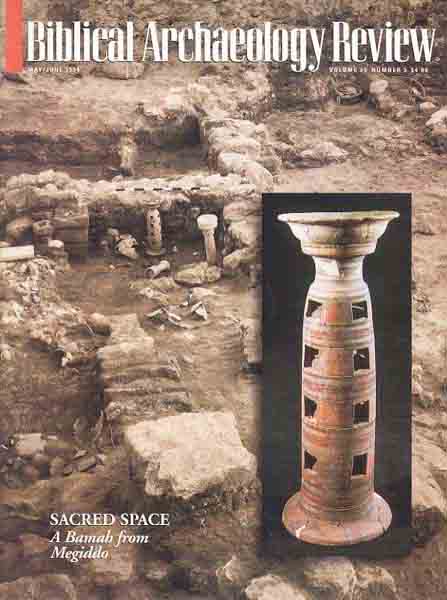Image Details

Courtesy Oriental Institute, University of Chicago/Inset photo by Eric Lessing
ON THE COVER: Village sanctuaries replaced open-air sanctuaries as the prevalent place of worship at the beginning of the Israelite monarchy. A Solomonic building project constructed two sanctuaries at Megiddo in the tenth century B.C.E. One of them, called Shrine 2081 by archaeologists, featured a rich array of cultic artifacts, as seen in this vintage photo from the time of its excavation early in this century. Two cylindrical cult stands, one with a fenestrated base and horizontal painted stripes (seen in close-up, inset), stand in the sanctuary, a little above the center of the photo. A meter stick lies on the wall above them. Beside them, a third cult stand lies on its side. To the left of the fenestrated stand, a large horned altar stands in the corner of the structure. Abundant broken pottery litters the site. Pharaoh Shishak probably destroyed this sanctuary during his campaign of 926 B.C.E. (1 Kings 14:25–26). Beth Alpert Nakai looks at the history of such sanctuaries in “What’s a Bamah? How Sacred Space Functioned in Ancient Israel.”
